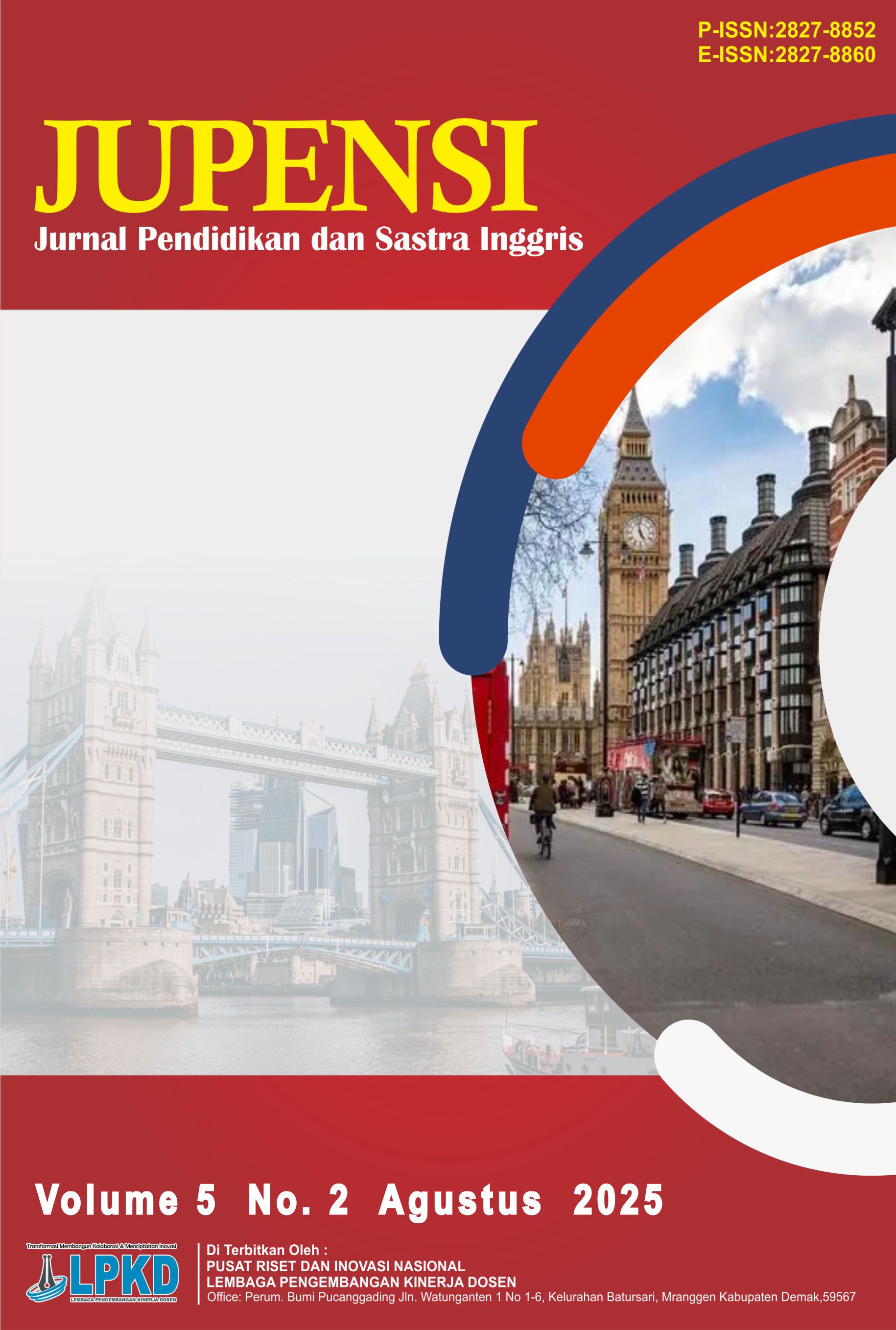The Influences of Social Standard to Woman Psychology in Toni Morrison’s The Bluest Eye
DOI:
https://doi.org/10.55606/jupensi.v5i2.5474Keywords:
social standard, woman psychology, moral development, readers response, PsychoanalysisAbstract
The aim of this study is to analyze the influence of social standard to woman’s psychology in Toni Morisson’s the Bluest Eye. The theory which had been used is social psychology from Handerson and Clarke. The additional theory is reader response from Richard Beach. This research utilizes the qualitative research design. The primer data collected by scrutinizing the novel Toni Morisson’s the Bluest Eye and the secondary data were taken from others resources. The finding shows the relevance of the social standard which had influences the African – American little girl, the main character. Conversely, during the creation of The Bluest Eye, Toni Morrison similarly encountered the prevailing societal mindset that equates whiteness, blue eyes, harmonious family in the real world. Consequently, the worldview Morrison presents in the novel reflects historical and social conditions which affect the psychology the woman character in the novel. Morrison aims to convey the message that social standard should not be regarded as the ultimate ideal of beauty because its implication into metal wellness.
Downloads
References
Alwisol. (2004). Psikologi kepribadian. Malang: UMM Press.
Cacciari, C., & Padovani, R. (2007). Further evidence of gender stereotype priming in language: Semantic facilitation and inhibition in Italian role nouns. Applied Psycholinguistics, 28(2), 277–293. https://doi.org/10.1017/S0142716407070142
Clarke, S., McKenzie, H., Haintz, G. L., & Graham, M. (2020). Social support and women’s reproductive decision making: Testing emergent fit of “optimizing support for the preservation of self”. Qualitative Health Research, 30(7), 975–987. https://doi.org/10.1177/1049732320904713
Feist, J., Feist, G. J., & Roberts, T.-A. (2017). Theories of personality (9th ed.). New York: McGraw-Hill Education.
Fudyartanta, R. B. S. (2005). Psikologi kepribadian Neo Freudianisme. Yogyakarta: Zenith.
Hall, C. S., & Lindsey, G. (1978). Theories of personality. New York: John Wiley & Sons, Inc.
Harries, T. (1993). Fiction and folklore: The novels of Toni Morrison. Knoxville: The University of Tennessee Press.
Henderson, E. F. (2019). On being the ‘gender person’ in an academic department: Constructions, configurations and implications. Journal of Gender Studies, 28(6), 730–742. https://doi.org/10.1080/09589236.2019.1620709
Kennedy, X. J. (1985). An introduction to fiction, poetry, and drama (3rd ed.). Boston: Little, Brown Company.
Koch, A. J., D'Mello, S. D., & Sackett, P. R. (2015). A meta-analysis of gender stereotypes and bias in experimental simulations of employment decision making. Journal of Applied Psychology, 100(1), 128–161. https://doi.org/10.1037/a0036734
Monthe, C. R. (1995). Beneath the mask: An introduction to theories of personality. Fort Worth: Harcourt Brace College Publisher.
Morrison, T. (1970). The bluest eye. New York: Holt, Rinehart and Winston.
Perrine, L. (1983). Literature: Structure, sound, and sense. New York: Harcourt, Brace and World.
Piaget, J. (1932). The moral judgment of the child. London: Trubner & Co.
Sánchez-López, M. d. P., Cuéllar-Flores, I., Limiñana, R., & Berná, F. J. C. (2012). Differential personality styles in men and women. SAGE Open, 2(2), 2158244012451752. https://doi.org/10.1177/2158244012451752
Tyson, L. (2006). Critical theory today: A user-friendly guide (2nd ed.). New York: Routledge.
Downloads
Published
How to Cite
Issue
Section
License
Copyright (c) 2025 Jurnal Pendidikan dan Sastra Inggris

This work is licensed under a Creative Commons Attribution-ShareAlike 4.0 International License.









